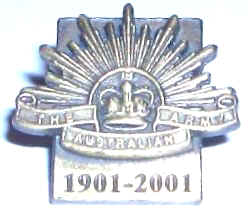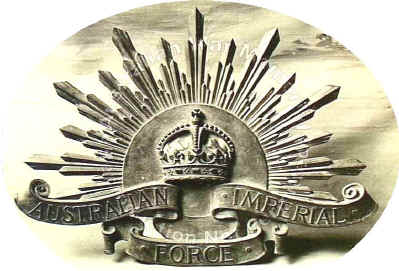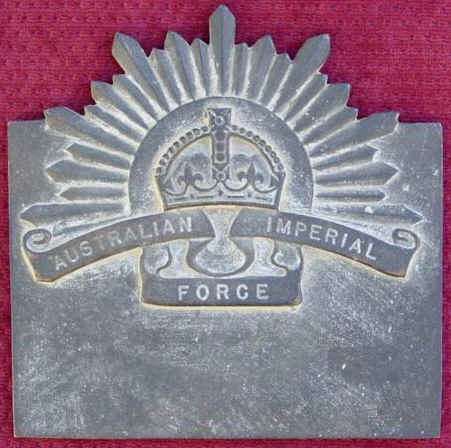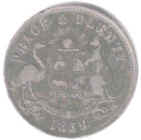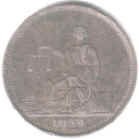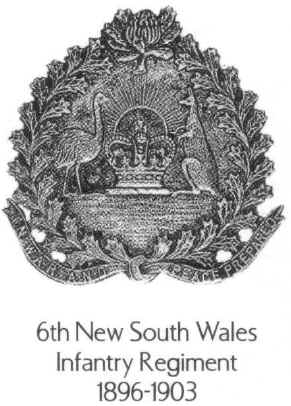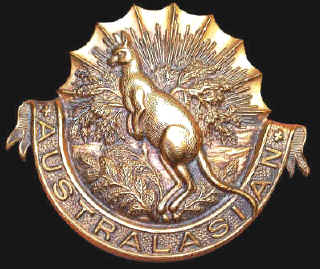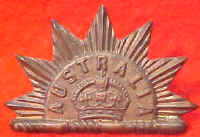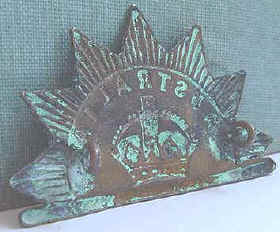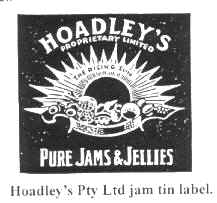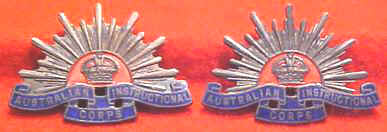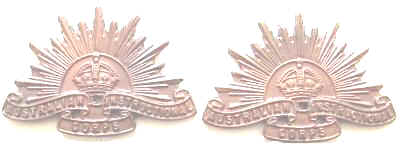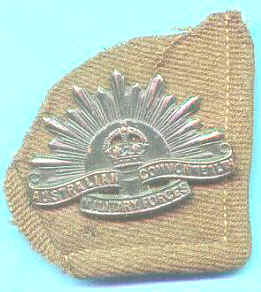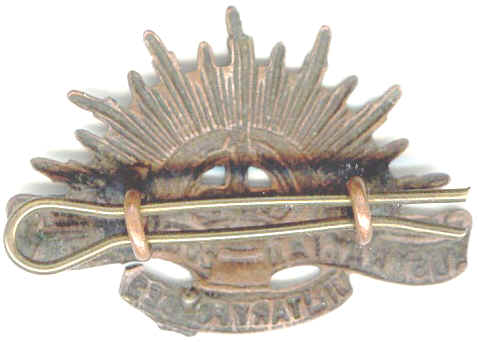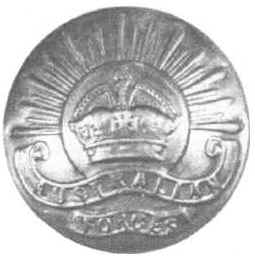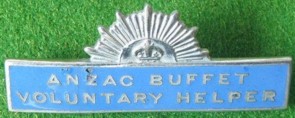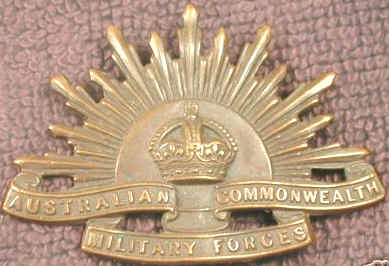 |
|
|||
|
|
||||
| The Rising Sun. Australia's most famous badge. |
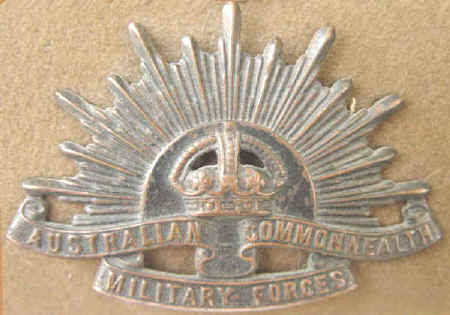 |
Sub-category index
|
|
This is version 3, the best known of the Rising Sun badges, the General Service badge of the AIF and the 2nd AIF. The badge that saw victory in two World Wars. |
|
|
Since its inception the basic form of the 1904 version has remained unchanged although modifications have been made to the wording on the scroll and to the style of crown. In 1949, when Corps and Regimental Badges were reintroduced into service, the wording on the scroll of the "Rising Sun" Badge was changed to read "Australian Military Forces". HM Queen Elizabeth ascended to the throne on the death of King George V1 and the Crown on the badge was subsequently changed from a Kings (Tudor) Crown to a Queen's (St. Edward's) Crown on the 1956 version. Twenty years later, the badge was again modified to incorporate the Federation Star and Torse Wreath from the original 1902 version of the badge and the scroll wording changed to "Australia" In the 75th anniversary year of the ANZAC landings at Gallipoli there arose a desire to return to the traditional accoutrements worn by Australian soldiers during the World Wars and which clearly identify the Australian Army. The recent change coincides with the 90th anniversary of the Army which was commemorated on 1st March 1991.
|
|||||||||
|
The start of a legend. |
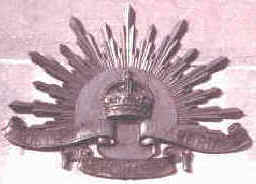 |
||||||||
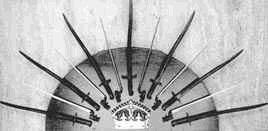
|
|||||||||

|
 |
||||||||
|
|||||||||
|
|
| WW1 Big brass rising sun badge plaque, Australian Imperial Force, size is 5½" x 5¾" and 4mm thick. Nice original one probably made as a door plaque. |
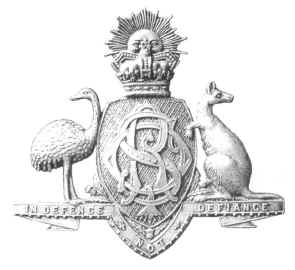 |
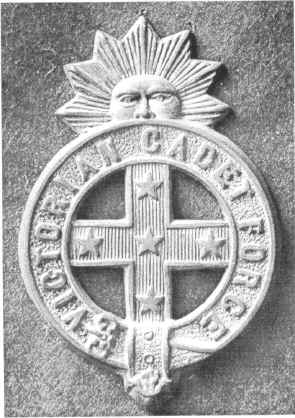
|
|
| This badge shows that in
1901 the idea of a "Rising Sun" was identified with
Australasia in general and Australia in particular by many in the
Empire.
Note that the rays are very very similar to the rays used on the later version of the Australian General Service badge. Image by Frank Green from his private collection. |
|
|
|
|
The current Rising Sun badge is the 7th version. This is the first. |
|
 |
|
|
Original badge for Australian Commonwealth Horse, 1902 |
Smaller and non-identical ACH collar badge |
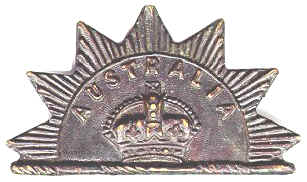
|
|
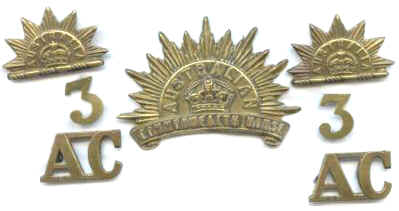 |
|
 |
Australian
Commonwealth Horse (2nd pattern) oxidised brass hat badge with Rising
Sun pattern rays, curved 'AUSTRALIA' over a Tudor crown, and underneath
a scroll with 'COMMONWEALTH HORSE'.
The words on the badge have been highlighted by rubbing back the oxidization to show the brighter brass. Badge is mounted on dark green cloth, edged with white stem stitch embroidery, cut in the pattern of a five petaled Tudor rose. Badges with this cloth backing were worn by members of the Australian Commonwealth Horse selected to attend the coronation of Edward VII in London in 1902. |
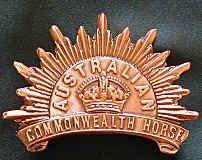 |
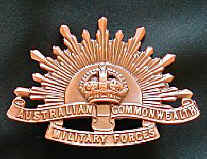 |
| 2nd version 1902 copper | 3rd version 1904 copper |
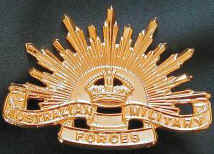 |
 |
| 4th version 1949 brass | 5th version 1956 brass |
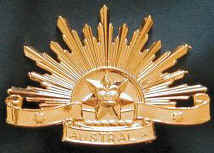 |
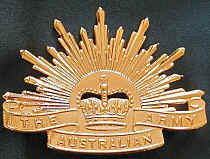 |
| 6th version 1969 gilt | 7th version 1991 gilt |
-
Version 3 was worn in BOTH World Wars
 |
During WW1 the Rising Sun was used in a stylised format on formation (TAC) signs for the Corps and for the Divisions. It is interesting to note that 1 & 2 Anzac Corps and 1st Division were the only units to get the 13 point Rising Sun. All other units got the 9 point Rising Sun on TAC signs. Cadet unit badges had 7 points. |
 |
| 1st Anzac Corps | 2nd Anzac Corps |
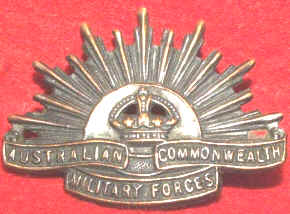 |
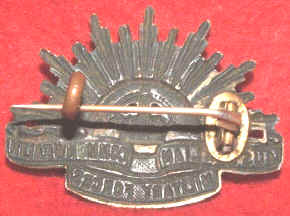 |
| WW1 Collar, non voided, unusual pin back style, probably private purchase in Britain. | |
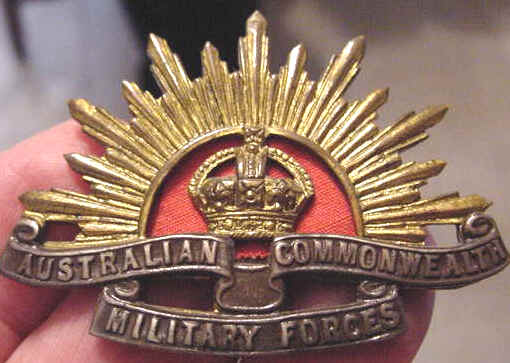 |
Gilt
& silver finished private purchase version from WW1, made in UK
probably for a senior Officer.
Note the scarlet cloth backing. Donor: Hugh Williams |

|

|
| 1903 Rising Sun Style, Staff & Instructional Corps Officer's Collar Badge | 1903 Rising Sun Style, Staff & Instructional Corps Officer's Collar Badge, enameled. |
|
|
|
|
|
|
| 1930 - 42 : Australian Instructional Corps. Hat badge & a pair of Collar Badges. |
|
|
 |
| Pairing of the RSB and an shoulder title, converted into a badge or brooch and silver plated. This is how some of the AIF nurses wore their badges. |
1956 QE II version |
|
|
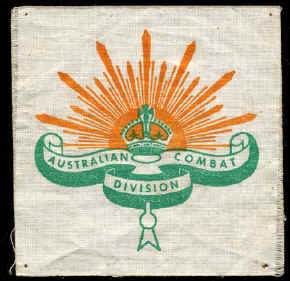 |
| General Service (Rising Sun) badge as worn as a collar dog, WW2 |
Australian Combat Division ?. Unit not known to myself or AWM. |
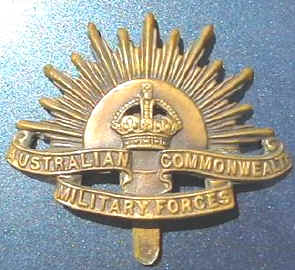 |
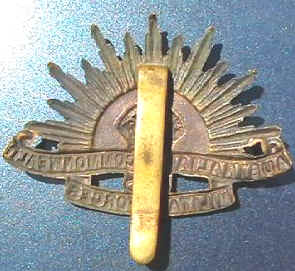 |
| Light Horse RSB with slider bar (not a pin) to slip onto front of puggaree. | |
|
|
| This is the normal method of fixing the General Service badge (Rising Sun) to the "Hat, khaki fur felt". Twin lugs and a pin. |
|
|
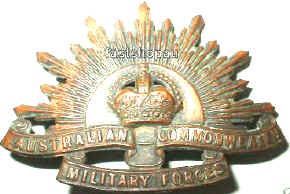
|
|
|
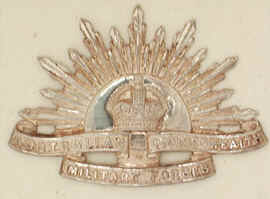 |
|
| Sterling silver General
Service (Rising Sun) hat badge, 1904 pattern. Badge shows a scroll
with 'AUSTRALIAN COMMONWEALTH MILITARY FORCES', surmounted by a Tudor
crown, with a semi-circle of 'rays' above it.
Thought to have been worn by staff and light horse officers, but this is unconfirmed. AWM REL25098 |
|
|
|
|
The third and best known version |
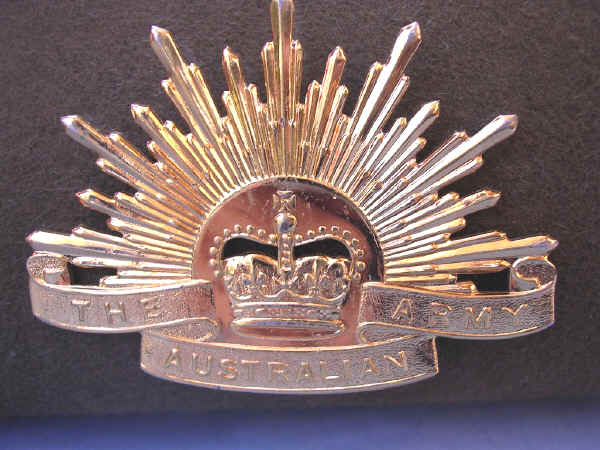 |
|
The 7th and current version. |
